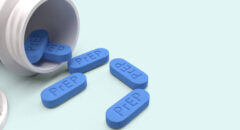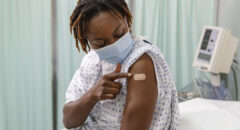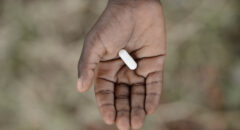 According to the Centers for Disease Control and Prevention (CDC), 1.1 million people are living in the United States with the human immunodeficiency virus (HIV), and African Americans account for the majority of new HIV cases. In fact, 45 percent of HIV cases in 2015 were among African Americans. Moreover, HIV is a risk factor for type 2 diabetes – a condition also affecting African Americans at disproportionate rates.
According to the Centers for Disease Control and Prevention (CDC), 1.1 million people are living in the United States with the human immunodeficiency virus (HIV), and African Americans account for the majority of new HIV cases. In fact, 45 percent of HIV cases in 2015 were among African Americans. Moreover, HIV is a risk factor for type 2 diabetes – a condition also affecting African Americans at disproportionate rates.
What is Type 2 Diabetes?
Diabetes is a group of diseases characterized by elevated blood glucose—also called blood sugar, levels due to problems in insulin secretion, insulin action or both. Insulin is the hormone that helps move glucose into your cells to be used as energy.
According to the American Diabetes Association (ADA) type 2 diabetes usually begins with insulin resistance. When you have insulin resistance, your body may be making plenty of insulin, but the insulin is unable to do its job properly. As a result, the body needs higher levels of insulin to help glucose enter cells. Overtime, as insulin resistance progresses insulin production gradually decreases, eventually reaching a level of deficiency. Without enough insulin, glucose builds up in the bloodstream, leading to
Type 2 Diabetes Risk
If you are over 45 years of age, have a family history of diabetes, are overweight, and aren’t physically active you are at risk for diabetes. People whose family background is African American, Alaska Native, American Indian, Asian American, Hispanic/Latino, or Pacific Islander American are at greater risk of type 2 diabetes. Having HIV is also a risk factor for diabetes.
The use of highly active antiretroviral therapy (HAART) to treat HIV may increase your blood glucose levels and lead to type 2 diabetes. HAART is a customized combination of different classes of medications. Protease inhibitors (PIs) and nucleoside reverse transcriptase inhibitors (NRTIs) are two drug classes used extensively as antiretroviral agents. These HIV medicines may cause insulin resistance and increased glucose levels, which can result in type 2 diabetes. Your risk for diabetes is even higher if you are also infected with hepatitis C, which increases insulin resistance. Diabetes resulting from antiretroviral therapy is also referred to as antiretroviral associated diabetes.
The ADA recommends people with HIV have their blood glucose levels checked before they start taking HIV medicines. If your glucose levels are higher than normal, you may need to avoid taking some HIV medications and use other HIV medicines instead. Ask your health care provider about the link between your HIV medications and diabetes.
Blood glucose monitoring is also necessary after you start HIV medicines. Your healthcare provider can also talk to you about your risk of diabetes and options for monitoring your blood glucose levels.
Managing Diabetes
Type 2 diabetes can often be controlled with a healthy diet and regular exercise. A healthy diet includes vegetables, fruits, beans, whole grains, and lean meats and is low in processed foods high in sugar and salt. Regular exercise means being active for at least 30 minutes on most days of the week. Sometimes, in addition to a healthy diet and regular physical activity, medicines are needed to control type 2 diabetes. If you are diagnosed with diabetes after HAART, you may be treated with oral diabetes medications or insulin.
To learn more about HIV and Diabetes read A Helpful Guide to HIV and Metabolic Complications from the National Institute of Allergy and Infectious Diseases.
 Constance Brown-Riggs, MSEd, RD, CDE, CDN is a registered dietitian, certified diabetes educator, national speaker and author of The African American Guide to Living Well with Diabetes.. She is a Dannon One Yogurt Every Day Nutrition Advisor.
Constance Brown-Riggs, MSEd, RD, CDE, CDN is a registered dietitian, certified diabetes educator, national speaker and author of The African American Guide to Living Well with Diabetes.. She is a Dannon One Yogurt Every Day Nutrition Advisor.








